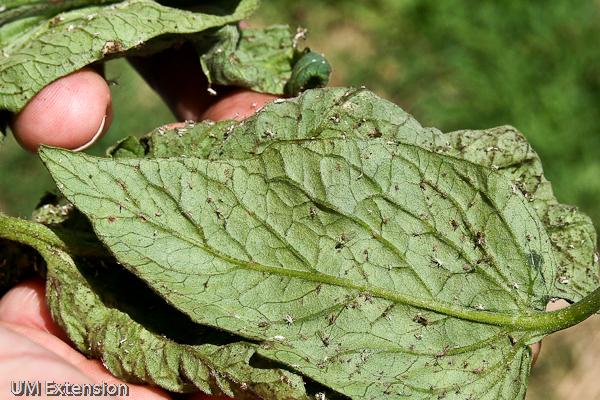Controlling aphids on vegetable plants
Appearance
- Adults: Small, soft-bodied, tear-drop shaped, ranging in color from green to blue-green, yellow, orange, red, black, and grayish-white.
- Some are covered with fluffy white wax. Most have a pair of tubular cornicles near the tip of the abdomen (looks like a “dual-exhaust” system). Dispersing adults have wings.
- Immatures: Resemble adults.






